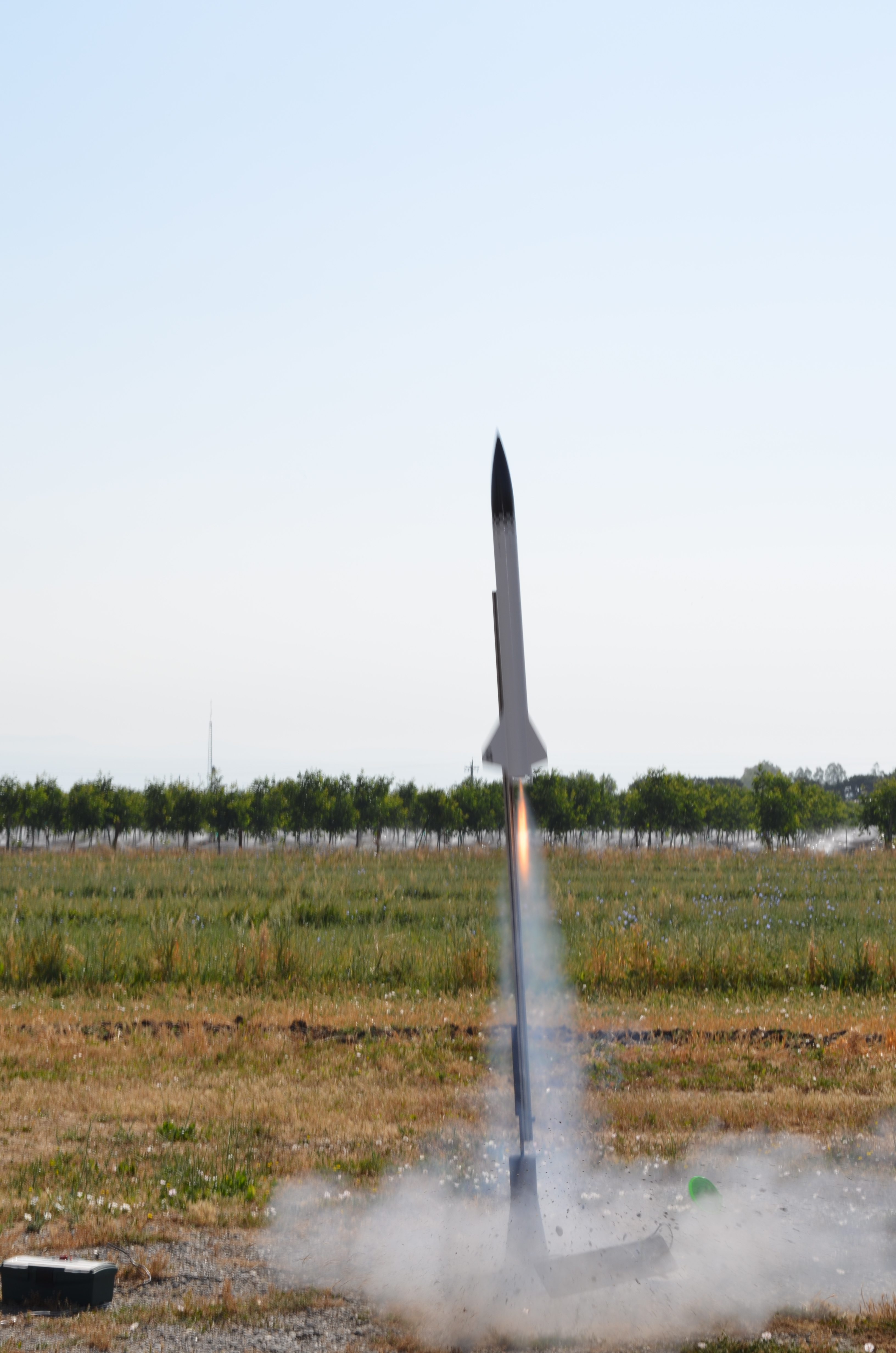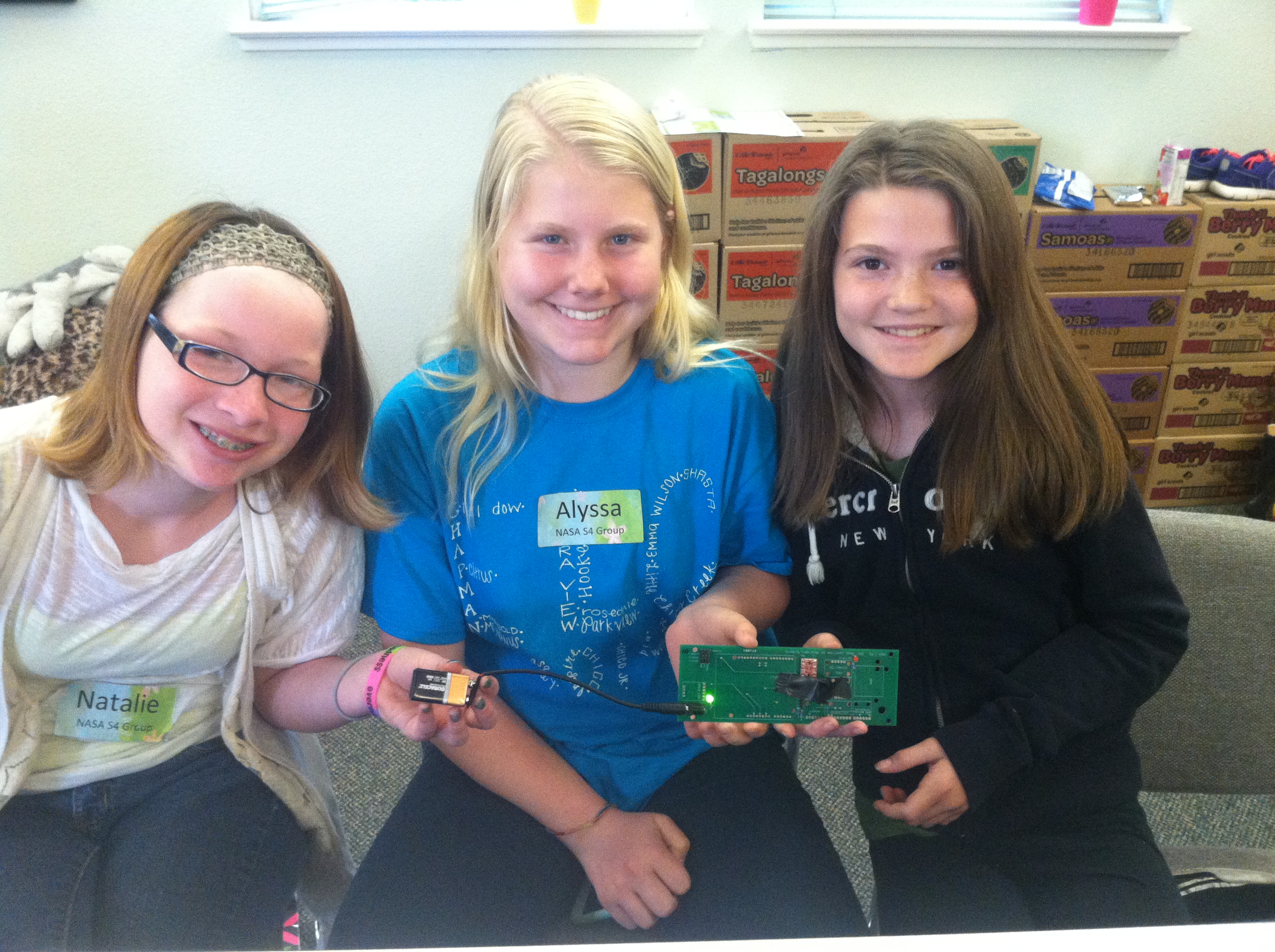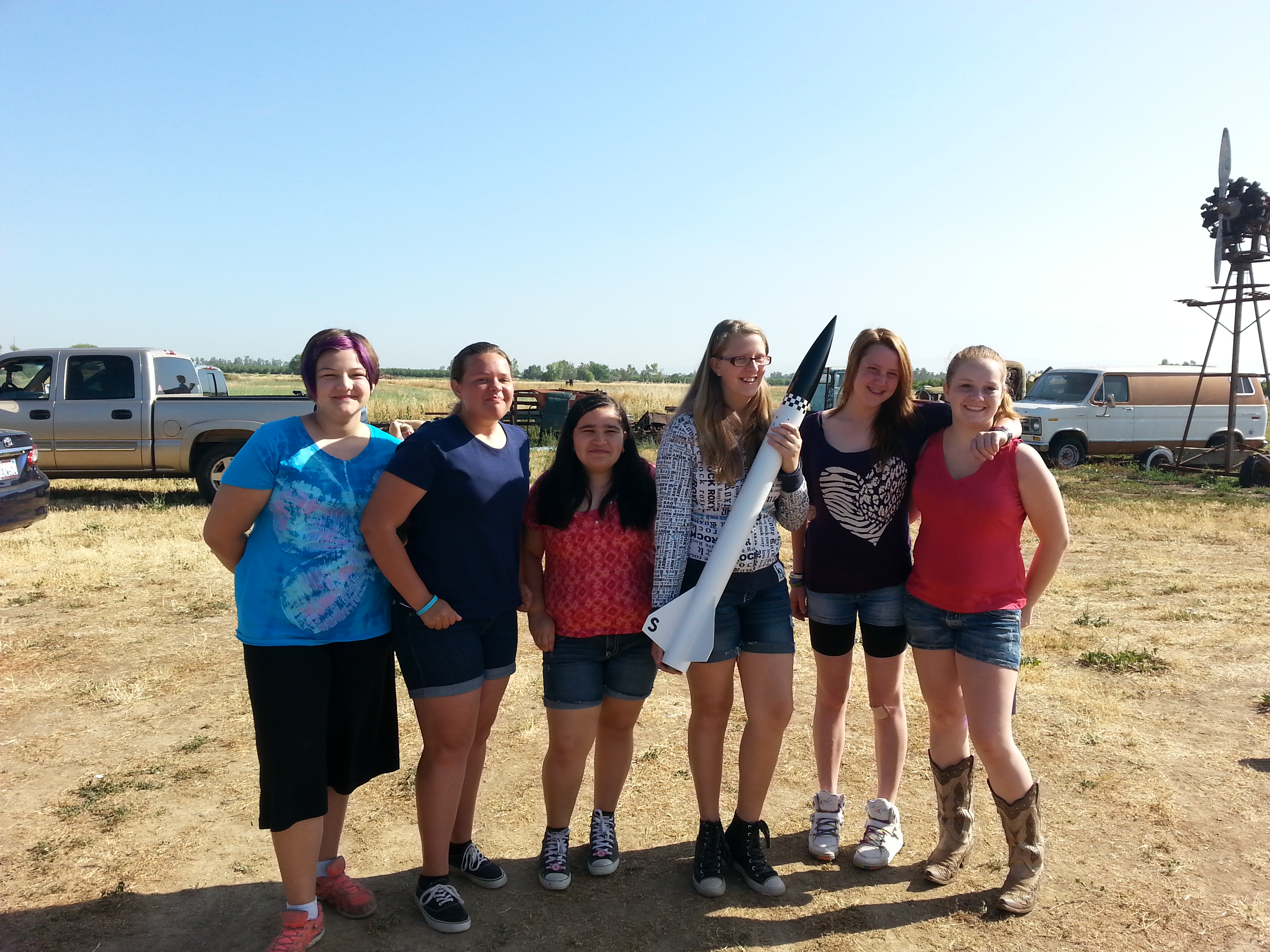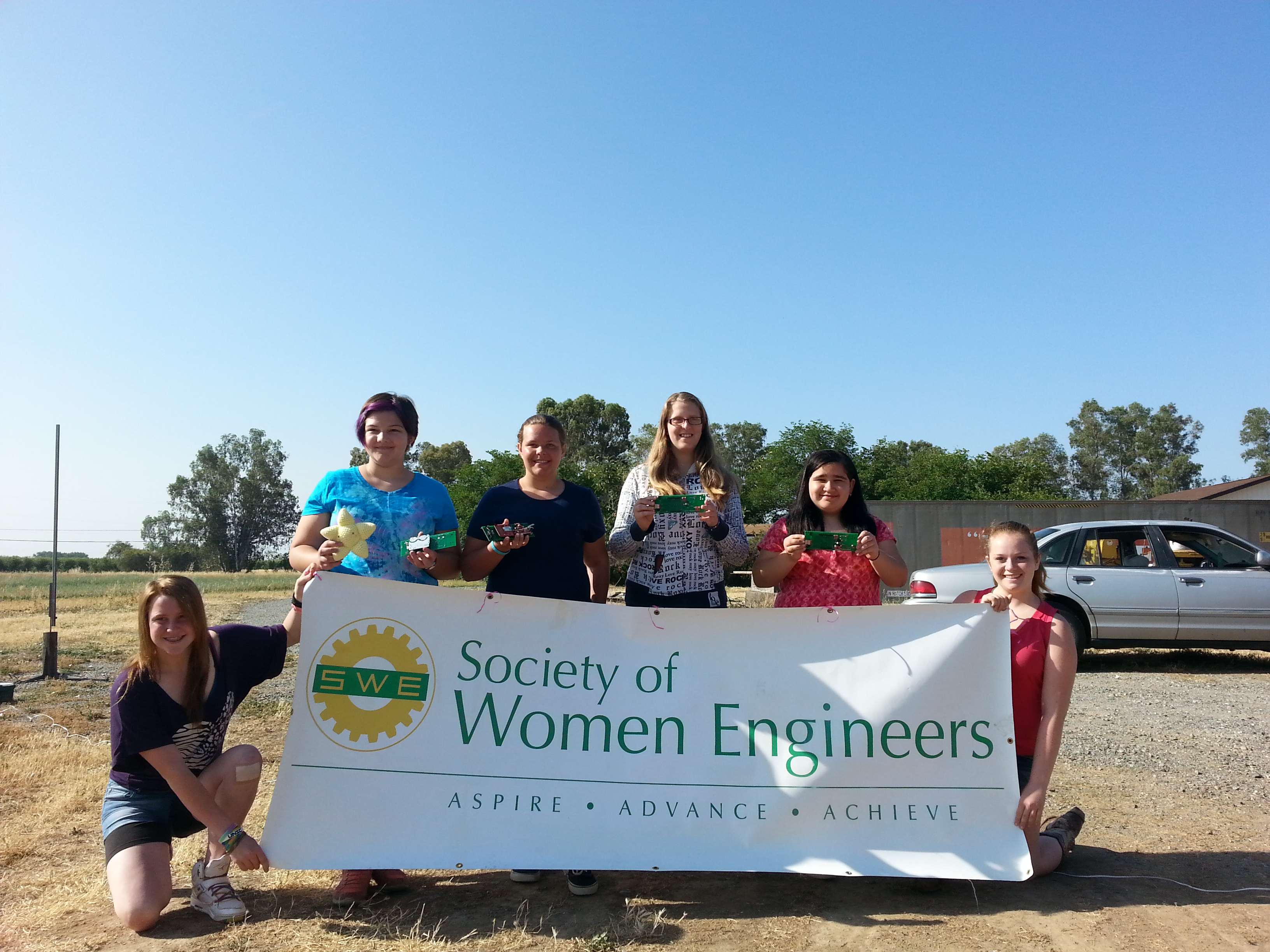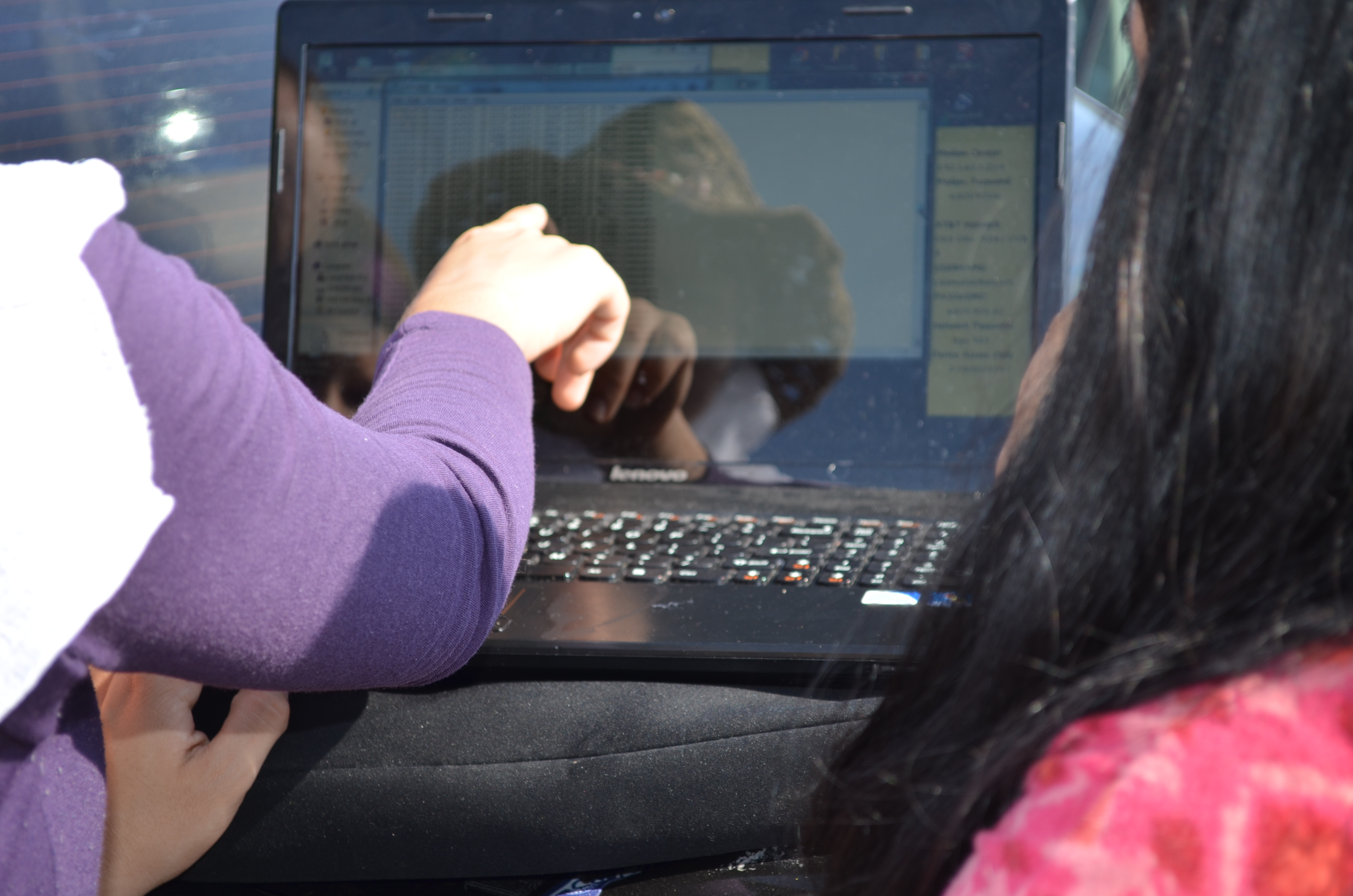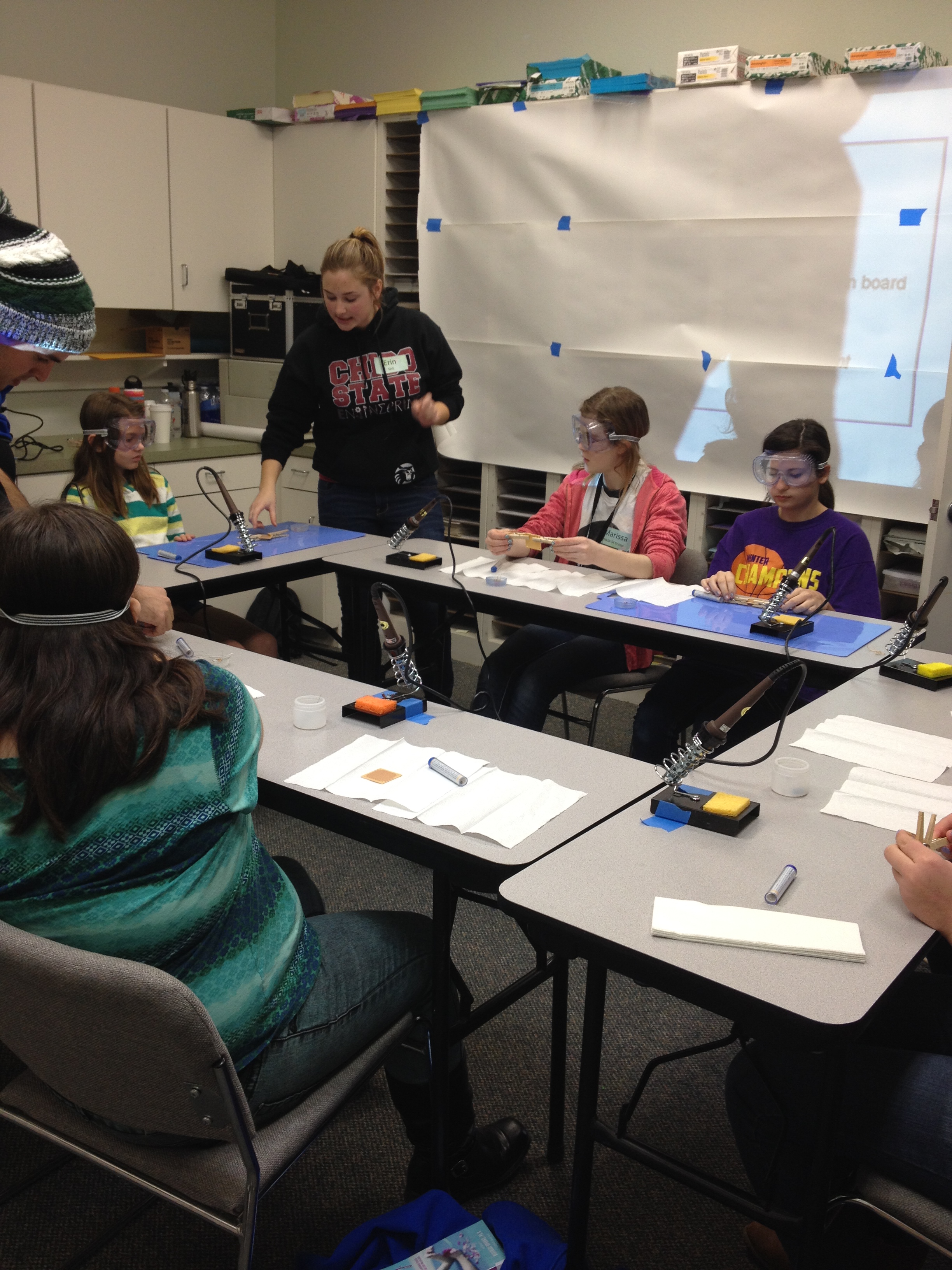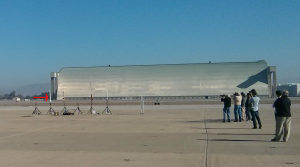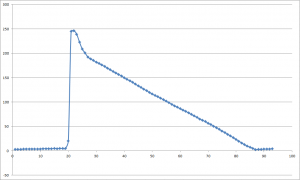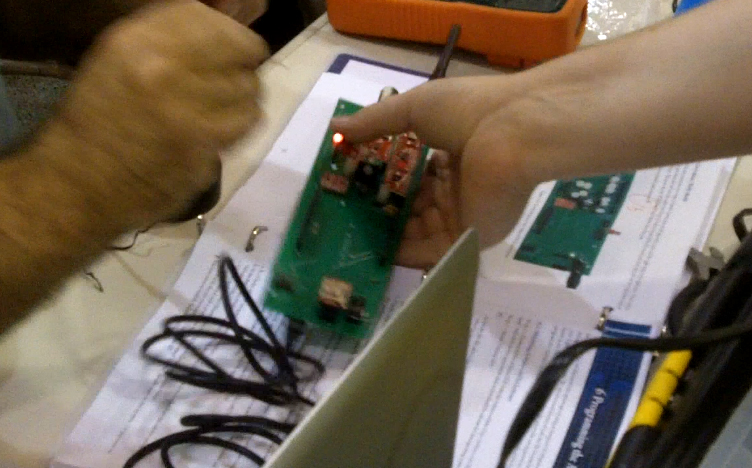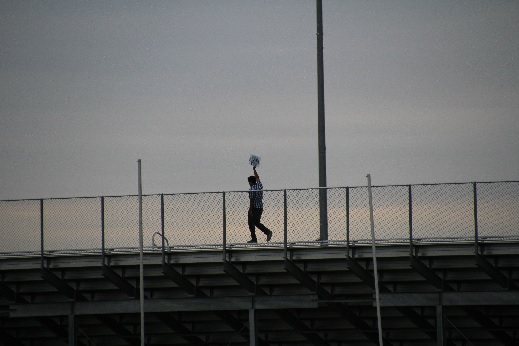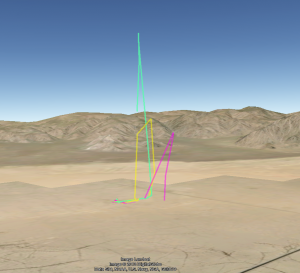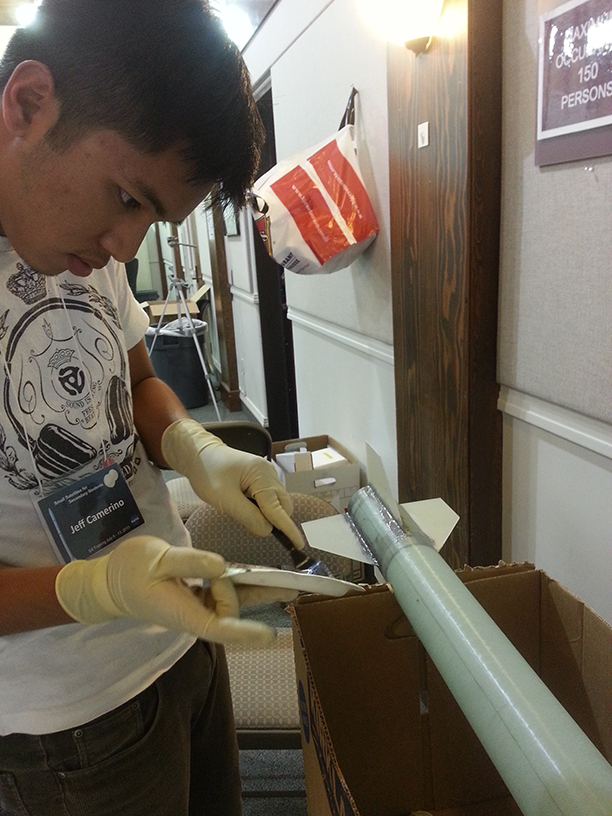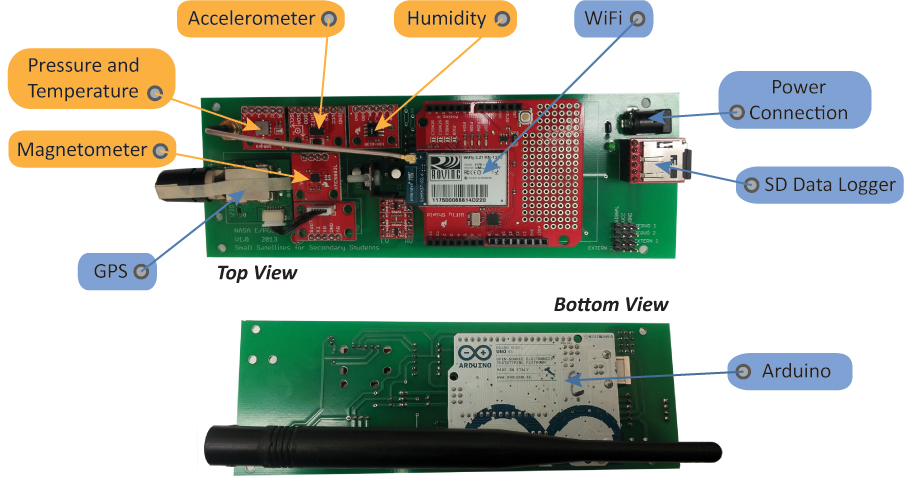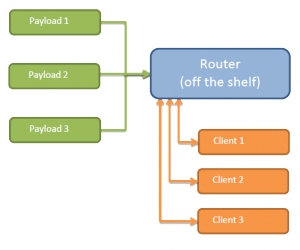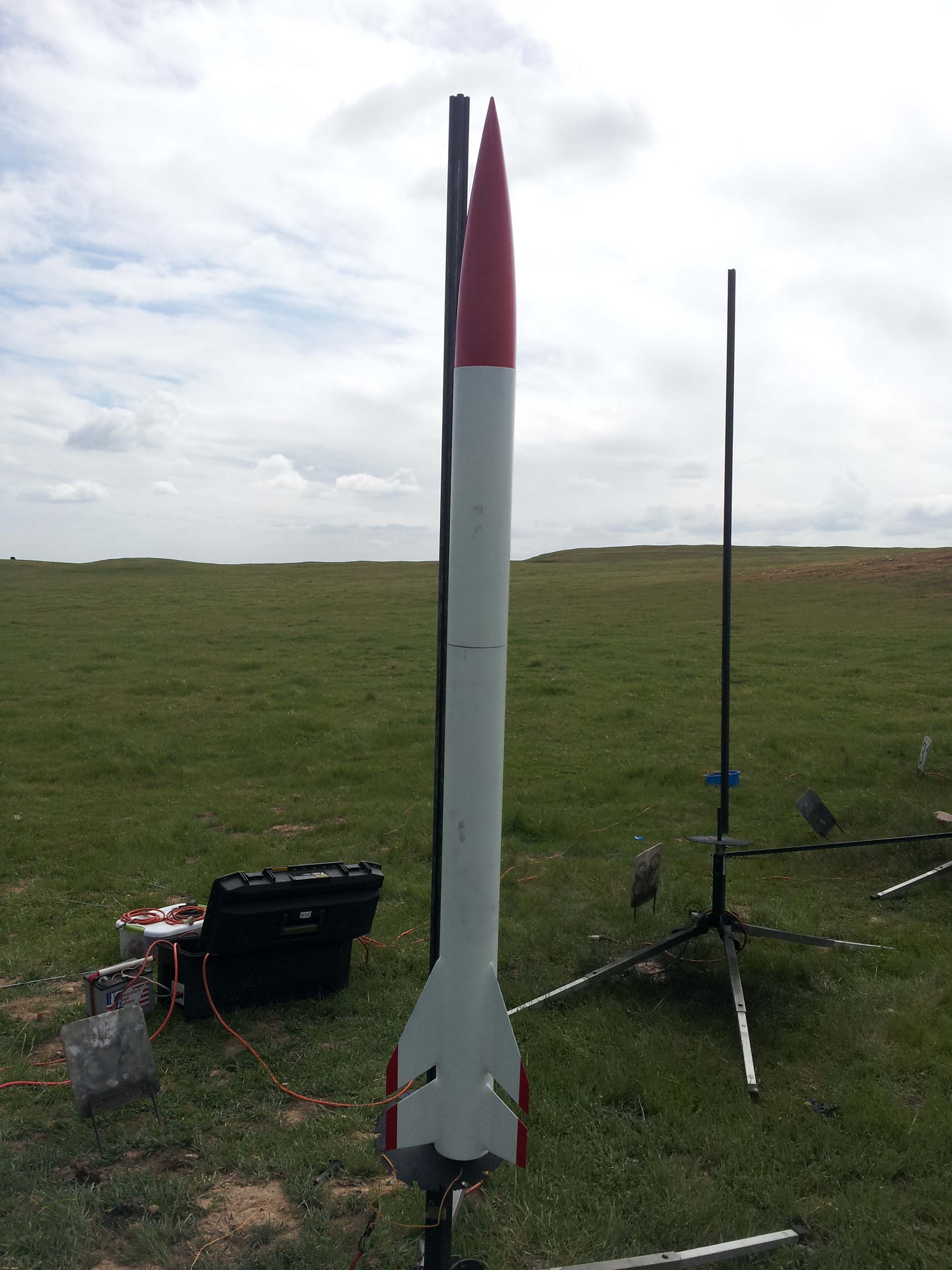At yet another successful teacher training event held in Chico, we were able to assist young ladies in putting together their own payloads for take off. The payloads each had a micro-controller as well as a unique sensor used for measuring and sending data from above. Please find all details, files, and images from this event below.
Small Satellites for Secondary Students
Michelle Rodriguez and Salam Ali
Chico, Ca
Overview
We split the girls up into middle school and High School teams; each with 3 to 4 girls per team. Originally, the middle school teams were supposed to go to BalloonFest to collect their data by balloons, but we had an issue with insurance and parent apprehension about driving that far (5 hours). Therefore, both the middle and high school teams collected data by the M3 rockets.
All Participants
| Participant Name | Grade |
| Marissa Armstrong | 7th |
| Rhiannon Besser | 9th |
| Amanda Bestor | 6th |
| Harley Blunkall | 11th |
| Sara Brogden | 7th |
| Natalie Canida | 7th |
| Tarra Crowley | 8th |
| Keris Friedrichs | 7th |
| Alyssa May | 6th |
| Iris Miller | 11th |
| Laryssa Olson | 9th |
| Tatiana Solis | 8th |
| Lily Wright | 11th |
Payload Details
We built four payloads, each containing all the essential and basic parts. Then, each payload had a sensor. We had the following sensors: Accelerometer, Humidity, Barometer and magnetometer. All the payloads worked perfectly and logged data except one; the magnetometer sensor was faulty. We flew 3 of the 4 payloads by rockets. Unfortunately, the rocket’s parachute tore the rocket apart and it became too damaged beyond repair. The good news is that we were able to collect data for all the payloads that got launched.
- Excited to show off their payload
- About ready for take off
- Future young ladies of SWE
(Click photo to enlarge)
Payload Data Collection and Presentations
We were able to collect data for the Accelerometer, Barometer and Humidity sensor. The presentations are attached to the email.
Overall Experience
In the overall experience expressed by the participants, they all enjoyed it. The thing they enjoyed most was learning the various capabilities of the sensors and learning how to solder. In addition, they expressed how interested they were in pursuing a career in a STEM career. We also had some of the parents express gratitude and said that they were surprised that a project like this was happening in such a small town. They said that they would love to see this program continue and to encourage young women that they can achieve a degree.
Link(s) to included file(s):

